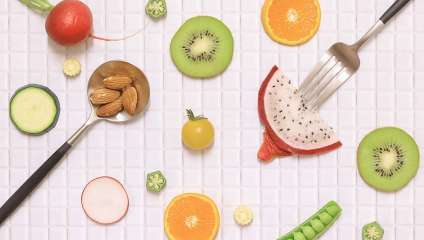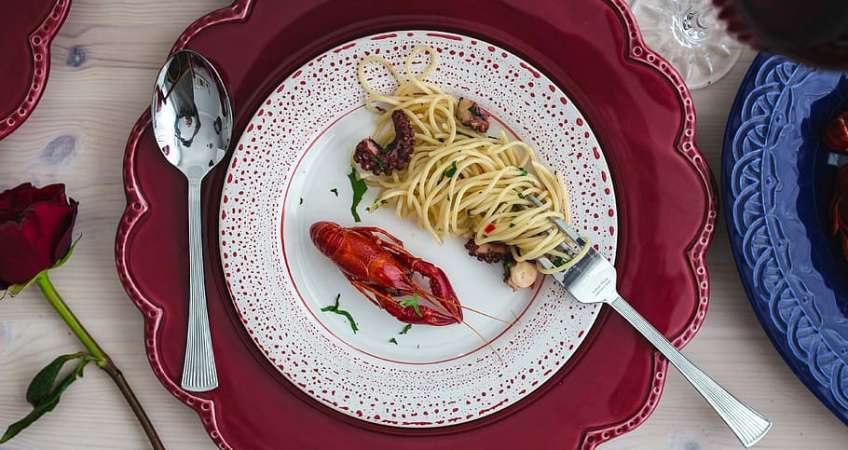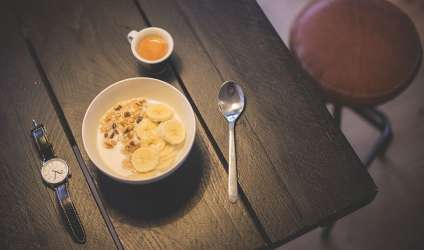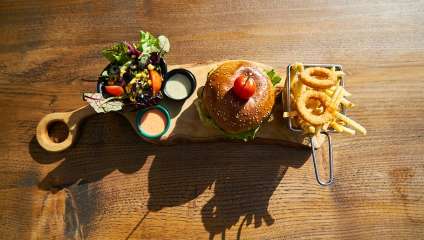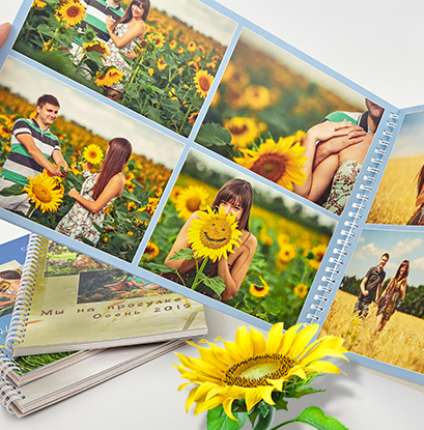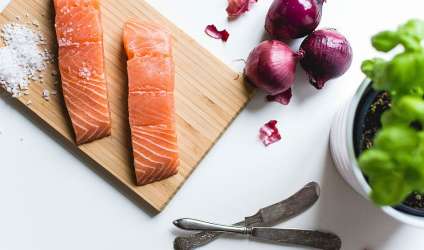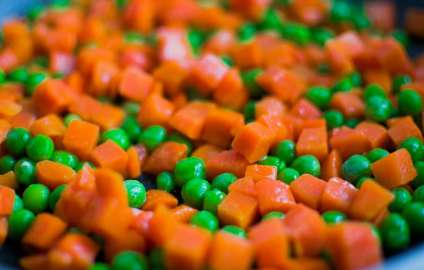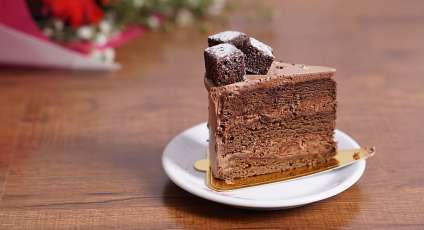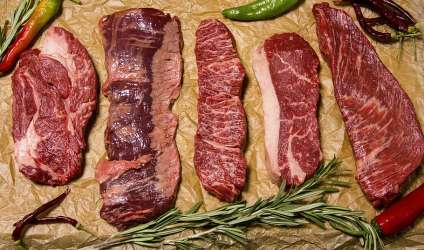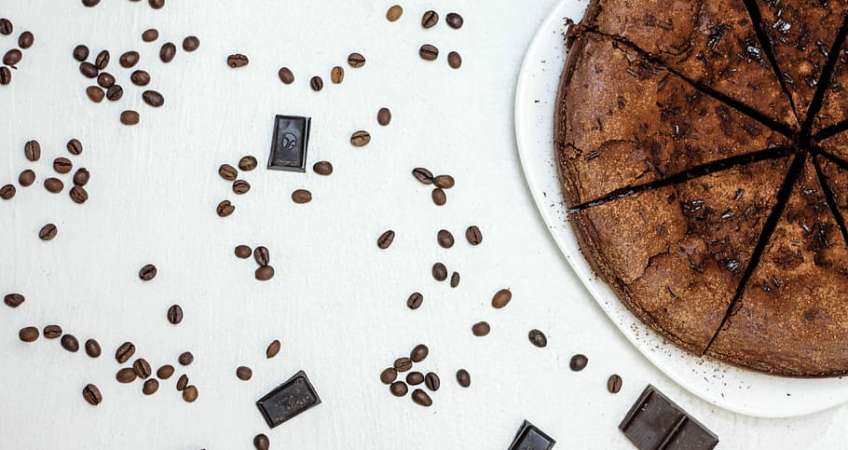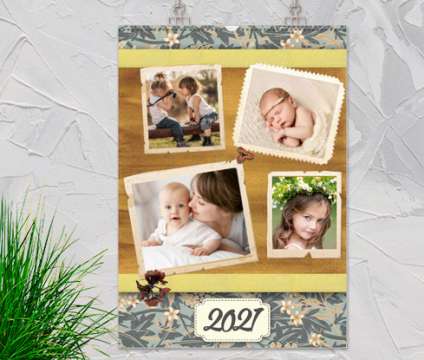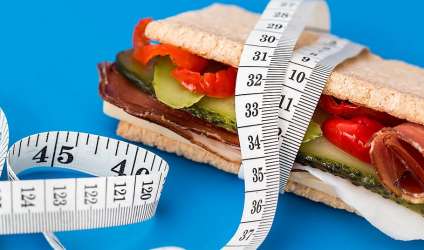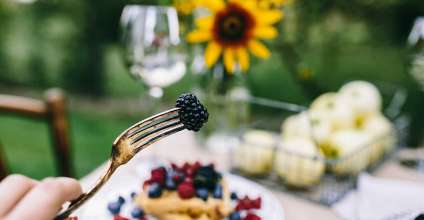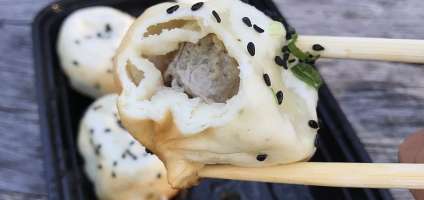Useful tips for Food Photography or how to photograph food
Published: 22.12.2020
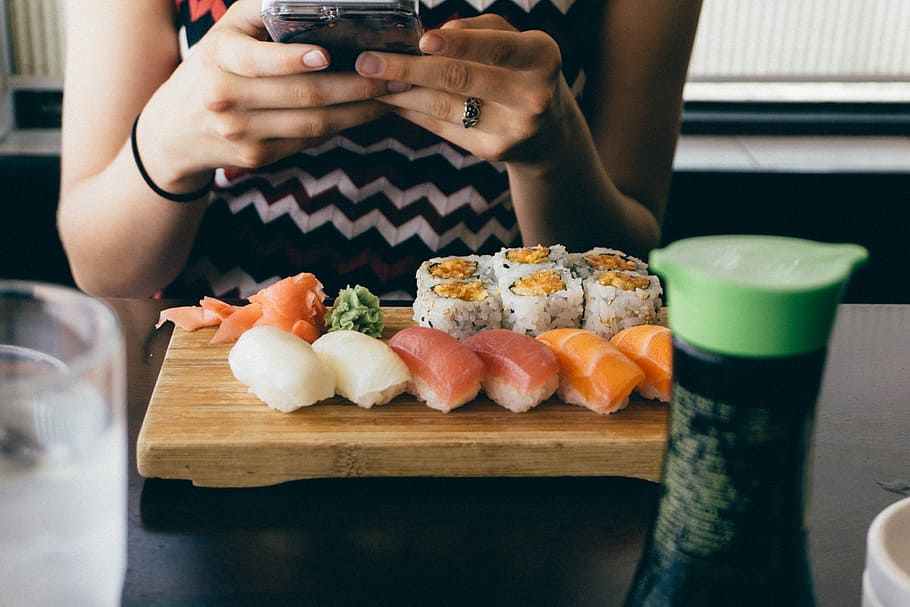
Several simple rules will help you take cool food photos. Use our tips on how to photograph food correctly and beautifully not only on a camera, but also on a phone.
Food photography should make you want to eat (or drink) it. The person looking at the photo should imagine themselves next to that food and be ready to start a meal. Therefore, there should be a straw in glasses with drinks, a piece cut off from the steak, etc. But most importantly - no packaging. Everything should be ready for consumption :)
Our tips for food photographers, bloggers, and those who offer home delivery services. Good photos can make your offerings stand out among millions of others on the Internet. You don't need to have a photography degree to take beautiful food photos. You can learn how to take beautiful food photos even in your own home.
Food photography is all about the details
Have you ever wondered why your food photos lack the "wow" factor? Perhaps you are not capturing the right things. To make a photo more appealing, choose foods of different colors and textures. A plate full of fruits of the same color just won't cut it. It definitely lacks that one special touch.
Natural lighting
Light is the guarantee of a beautiful photo. Take pictures of food in natural light, not artificial. Lamps distort the image, adding an ugly orange or yellow tint to the photo.
It is important to accurately convey the colors of the food, plates, background, and decor elements. Agree that orange or gray rice will cause disgust in the viewer.
It is extremely important to know about the lighting around you. If you are taking photos of food in a restaurant, consider shooting in an outdoor courtyard or near a window to provide natural lighting. If you are shooting at home, play around with light at different times of the day to see what works best for your photo.
When photographing food indoors, do it near a window. This will allow you to easily adjust the composition and highlight the product's advantages. Natural lighting provides a neutral soft color, accurately reproducing the natural beauty of the subject. Don't be afraid of cloudy weather. The overcast daylight from the window acts as a giant diffuser, creating soft light with subtle shadows. On the other hand, bright sunny weather worsens the photo quality. In addition to exposure issues, you will get harsh shadows.
How to deal with shadows in food photos?
Shadows are a significant element in food photography. They can either enhance or ruin a photo. On one hand, shadows add depth and create visual interest, but on the other hand, if not used correctly, they can overwhelm the entire image. Therefore, take control of the shadows.
Strong shadows can create interesting shapes and enhance the composition. However, until you learn how to work with them, try to avoid bright sunlight. Soft shadows are much better suited for the subject, creating subtle depth and volume without dominating the scene.
On a bright sunny day, move the food to a slightly shaded place. Hang a semi-transparent fabric or a white sheet of paper on the window. This will help to diffuse the light and avoid harsh shadows.
Food photos in the menu are a great marketing move. You can create a menu with cool food photos right in the Light album. There is no need to print photos separately. We will print your photos directly on the pages of the Light album. Upload images to the free editor Mapi7 and create a themed Light album. You can upload photos from your phone.
Experiment with the background
Background is an important component of food photography. A dirty or overly colorful background can distract the viewer. A neutral background allows for maximum focus on the food. However, a neutral background does not mean "nothing". The background should be simple, adding to the object but not overwhelming it. Here are some background solutions for food photography.
- Light background. As a background, you can use light kitchen towels, tablecloths with a subtle pattern or floral print. You can also place the food on parchment paper, a light countertop, or a linen napkin.
- Dark background. Use a dark trivet for hot dishes, a dark baking sheet, a newspaper with small print, a dark countertop.
Remember the rule of choosing a background for food photography: light food on a dark background, dark food on a light background.
- Wooden background. We have intentionally highlighted this background as a separate point. A wooden background is the most advantageous when photographing food. Cutting boards, countertops, and window sills made of wood look great with almost any type of food.
More about choosing a background read inour article.
Play with color
Any dish or food products are a play of colors in themselves. Enhance the impression of food photography by using similar colors. Harmony, a sense of comfort and tranquility is evoked by warm earthy tones (now it's clear why wooden items are chosen for the background). A bright, dynamic picture that stimulates emotions and captures attention is achieved through contrasting colors in the composition.
Try using red and green colors. They work great in a frame. You can use them as a contrast between the food and the background, or apply these contrasting colors within the food itself.
Choose the angle
To fully capture an object, it is important to choose the right angle. When food is placed on a plate or cutting board, it is best to photograph it from above. This way, all the details of the dish and background are captured in the frame. Additionally, the shape of the dish, utensils, and other decorative elements are emphasized.
If the model's hands are in the frame, make sure that the hands are clean and moisturized. It's difficult to photoshop dirty nails and dry skin.
For those who are taking their first steps in food photography, it is better to use overhead shooting. This angle allows you to easily create a strong and balanced composition. Also, shooting from above minimizes the influence of distracting backgrounds.
But for some types of food, shooting from above is not suitable. This applies to drinks in glasses or cups, cakes in slices, etc. If you need to show the different colored layers of a cake or smoothie, shoot from the side or diagonally. It is important to shoot against a neutral background.
Do not allow disorder in the frame.
The focus should be on the food, not on what is on the table or in the background of the frame. Clear the scene, remove any clutter nearby before shooting. It is best to use a simple background, but there is nothing wrong with placing a vase, an extra plate, or a cocktail in the background if it looks clean and does not distract from the main object.
Carefully arrange the food. The arrangement affects the final image. Composition is the key to a great food photo. Therefore, the placement of each element in the frame should be carefully considered. For example, slice fruits or vegetables thinly and arrange them on a plate in a unique pattern.
Do not clutter the frame. Leave some empty space near the plate. Although close-up shots of food look cool, make sure to leave some empty space. This will create a more pleasant composition and highlight the shapes and textures.
Experiment with the placement of objects in the frame. Take a photo of a plate of food in the center, and then from the side. And choose the best option.
- Incorporate the ingredients of the dish into the composition. This will not only add interest to the composition, but also help create a 'visual recipe' of your food photograph.
- use spices. Fill a spoon with colorful spices and place it somewhere in the frame. You can arrange spices of different colors or sprinkle a part of the scene with a light dusting of spices.
- Arrange pieces of berries, fruits, nuts, chocolate, or fresh herbs,
- Place cutlery or kitchen utensils in the frame. They have clear shapes and lines that can be easily used to create a composition.
- Pay attention to other small household items that can complement the food, such as colorful pebbles.
Consider how the colors of your decorations will interact with the colors of the food and background. Do you want them to contrast with the color of the food, or do you want them to be similar?
- Emphasize the seasonality of the dish with leaves and flowers. Acorns, chestnuts, pine cones, and pebbles will make a wonderful addition to food photographs.
The perfect gift or a beautiful way to showcase cool food photos is to order a photo calendar. Upload your photos into the template of a free editor and create a cool menu for the year. At the end of the year, don't throw away the calendar. Carefully cut off the calendar grid and enjoy your photo album :)
Come up with a plot
Food photography is a story without words. Additional elements in food photography will create a story and capture the viewer's attention.
For example, add an open book or a teacup to create a sense of coziness, warmth, and relaxation in the image. Including a laptop will indicate that you can enjoy aromatic coffee or delicious cookies while working.
Including culinary books in the composition means that you are experimenting with new recipes. Herbal tea, a glossy magazine, or a children's toy will help the viewer imagine how to enjoy the food.
Approach
Take offclose distanceIn order to capture all the colors and details. Food photos should be sharp and clear, not blurry. Experiment with different angles - there's nothing wrong with taking 20 or more photos of the same dish. When it comes time to edit, you'll have a selection to choose from.
Most objects look best when only a few details are in focus.
Be careful with editing
Professional photographers recommend shooting in RAW format. Avoid using the pop-up or built-in flash, as it creates harsh lighting that can distort the colors in the photograph.
Be careful not to overdo it when editing. If food photos are taken in RAW format, you will need to edit them slightly. Since the raw format is an unprocessed file, not a jpg.
Food is a great subject for photography, with which you can achieve incredible artistic results. Like in any other genre of photography, there are specific rules to follow in order to get the right and enticing food photos.

